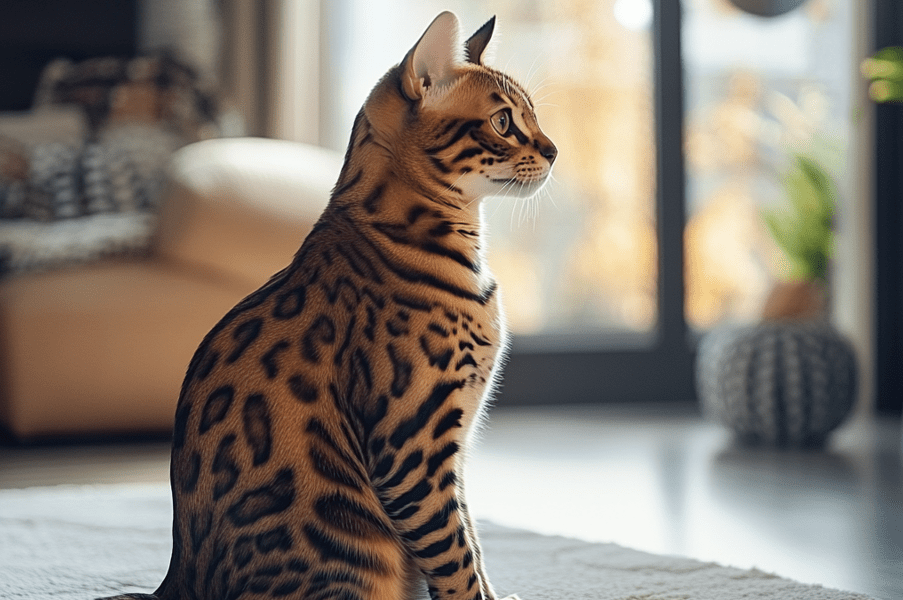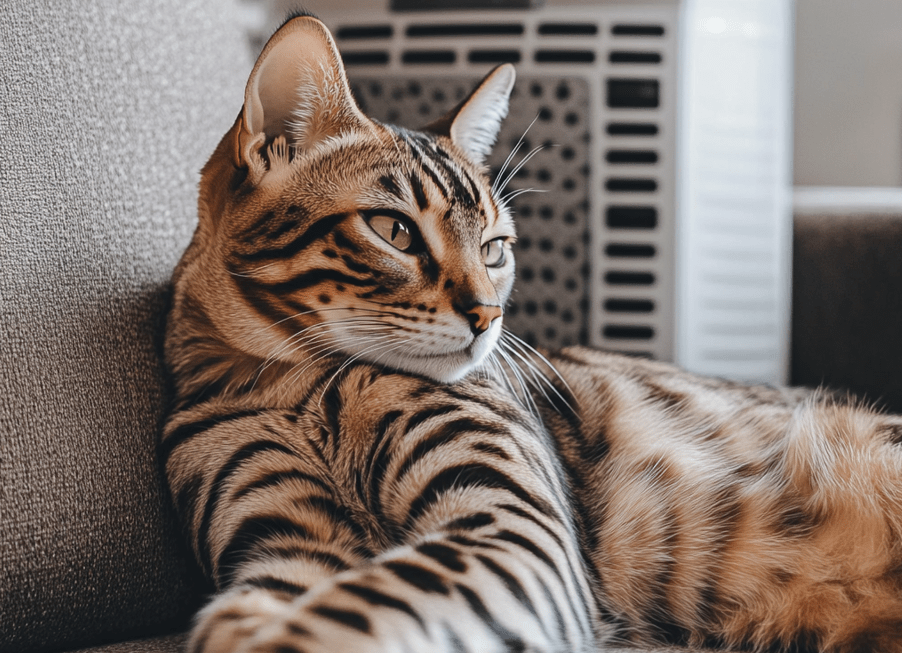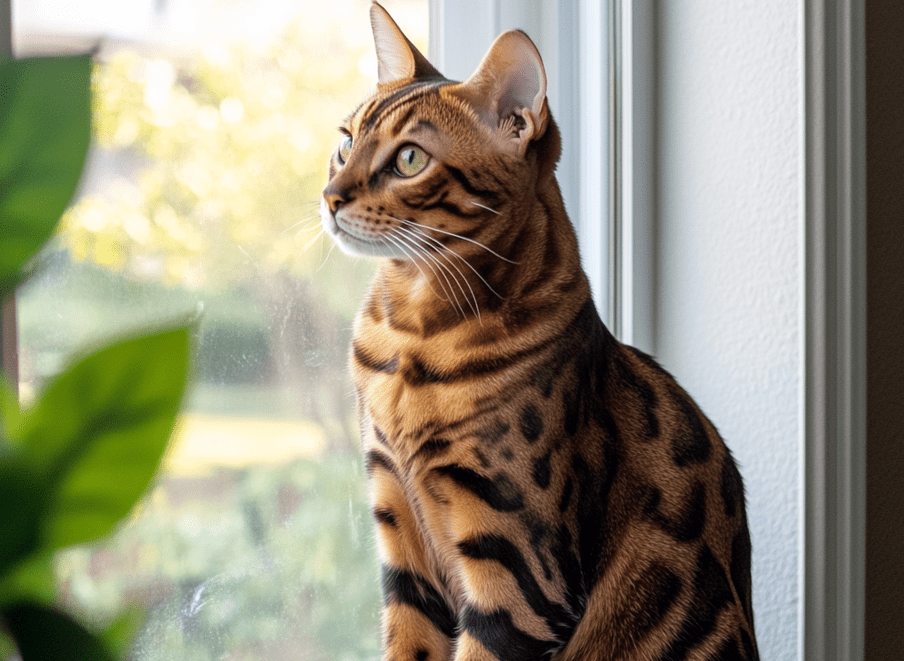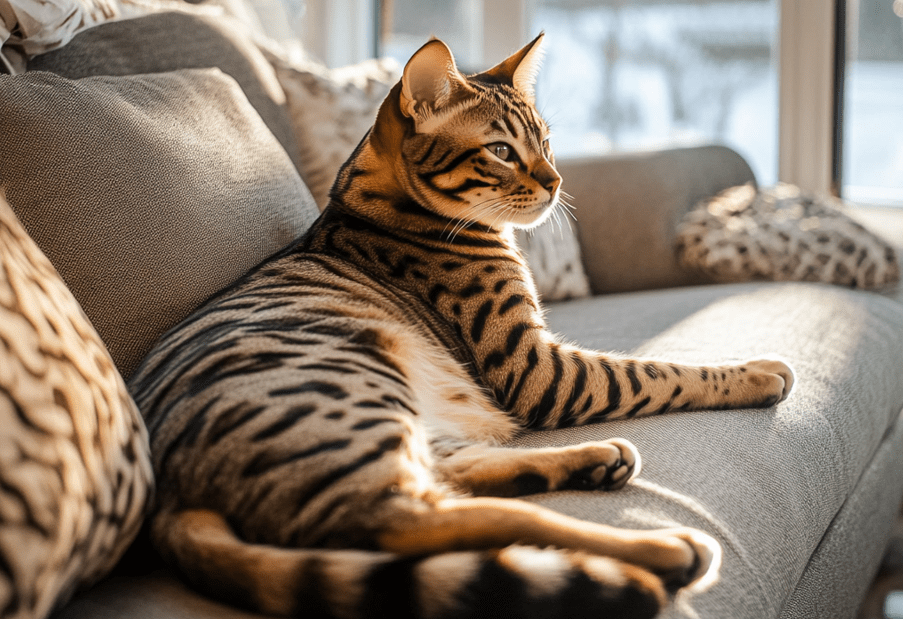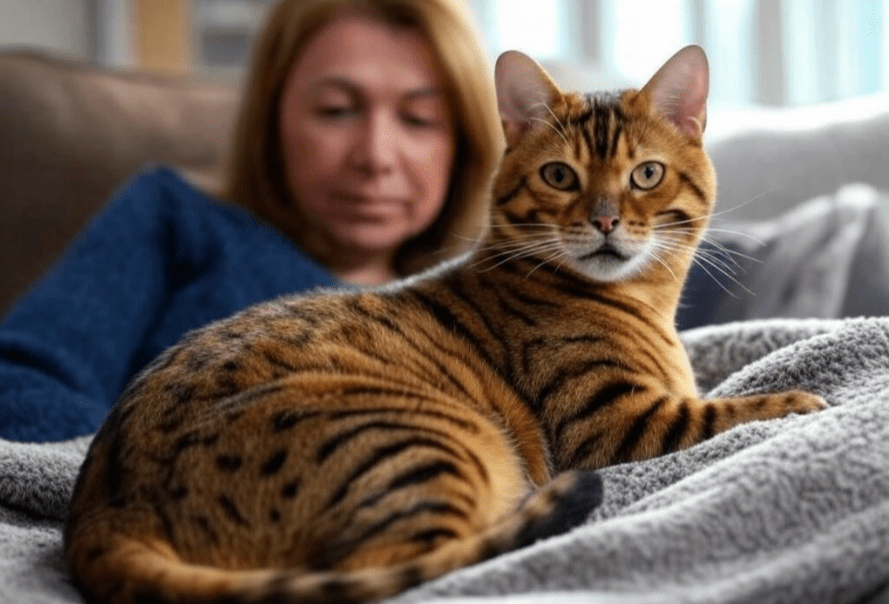
Bengal cats, with their striking spotted coats and energetic personalities, are a beloved breed among feline enthusiasts. Known for their agility and playful nature, these cats often captivate owners with their wild-like appearance and affectionate demeanor. However, like all breeds, Bengals can face certain health challenges, one of which is patellar luxation. This condition, where the kneecap slips out of its normal position, can affect a Bengal cat’s mobility and quality of life if not addressed properly. In this comprehensive guide, we’ll explore the symptoms, treatment options, and prevention strategies for patellar luxation in Bengals, empowering owners with the knowledge to keep their feline companions healthy and active.
What Is Patellar Luxation?
Patellar luxation, sometimes referred to as a “floating kneecap,” occurs when the patella (kneecap) moves out of its normal groove in the femur (thigh bone). This groove, called the trochlear groove, is designed to hold the patella in place as the knee flexes and extends. When the patella dislocates, it can cause discomfort, lameness, or even long-term joint damage if left untreated.
In Bengals, patellar luxation is often a hereditary condition, though it can also result from trauma or injury. The condition is graded on a scale from 1 to 4, based on severity:
Grade 1: The patella occasionally slips but returns to its normal position easily, often without causing noticeable symptoms.
Grade 2: The patella dislocates more frequently and may require manual repositioning, leading to intermittent lameness.
Grade 3: The patella is dislocated most of the time, causing consistent lameness and discomfort.
Grade 4: The patella is permanently dislocated, severely limiting mobility and potentially causing deformities.
While any cat can develop patellar luxation, Bengals may be predisposed due to their lean, athletic build and active lifestyle, which can put stress on their joints.
Why Are Bengal Cats Prone to Patellar Luxation?

Bengal cats are known for their high energy and acrobatic tendencies, often leaping from furniture or chasing toys with enthusiasm. These traits, while endearing, can contribute to joint stress, particularly if a genetic predisposition to patellar luxation exists. Several factors may increase the likelihood of this condition in Bengals:
Genetics: Many cases of patellar luxation are congenital, meaning they’re present at birth. Responsible breeders screen for this condition, but it can still appear in certain bloodlines.
Body Structure: Bengals have a slender, muscular frame with long legs, which may place extra pressure on their knee joints during vigorous activity.
Injury: Trauma, such as a fall or collision, can damage the ligaments or muscles supporting the kneecap, leading to luxation.
Obesity: While Bengals are typically lean, excess weight can exacerbate joint issues, including patellar luxation.
Understanding these risk factors can help Bengal owners take proactive steps to monitor their cat’s health and reduce the chances of complications.
Symptoms of Patellar Luxation in Bengals
Recognizing the signs of patellar luxation early is crucial for effective management. Bengal owners should watch for the following symptoms, which may vary depending on the severity of the condition:
Intermittent Lameness: Your Bengal may limp or favor one leg, especially after running or jumping. The lameness may come and go as the patella slips in and out of place.
Skipping or Hopping: A common sign is a “skipping” gait, where the cat briefly holds up one hind leg while moving.
Difficulty Jumping: Bengals are natural leapers, so reluctance to jump onto furniture or reduced agility could indicate discomfort.
Knee Clicking or Popping: You may hear a clicking sound when your cat moves, caused by the patella shifting out of its groove.
Pain or Sensitivity: In more severe cases, your Bengal may show signs of discomfort, such as vocalizing when the affected leg is touched or avoiding certain movements.
Abnormal Posture: Cats with chronic luxation may stand with their hind legs bowed or turned outward to compensate for instability.
If you notice any of these symptoms, consult a veterinarian promptly. Early diagnosis can prevent further joint damage and improve your Bengal’s quality of life.
Diagnosing Patellar Luxation in Bengals
If you suspect patellar luxation, your veterinarian will perform a thorough examination to confirm the diagnosis and assess the condition’s severity. The diagnostic process typically includes:
Physical Exam: The vet will manipulate your Bengal’s knee joint to check for patellar movement. They’ll assess whether the kneecap slips medially (toward the body’s midline) or laterally (away from it) and determine the grade of luxation.

Gait Analysis: Observing how your cat walks or moves can provide clues about the extent of lameness and discomfort.
X-Rays: Imaging helps evaluate the knee joint’s structure, revealing any abnormalities in the femur, tibia, or patella. X-rays can also identify secondary issues like arthritis.
Palpation Under Sedation: In some cases, sedation may be necessary to fully assess the joint without causing stress or pain to your Bengal.
A precise diagnosis is essential for tailoring an effective treatment plan, whether conservative or surgical.
Treatment Options for Patellar Luxation in Bengals
The treatment for patellar luxation depends on the condition’s severity, your Bengal’s age, activity level, and overall health. Options range from non-invasive management to surgical intervention. Here’s a detailed look at the possibilities:
1. Conservative Management (Grades 1 and 2)
For mild cases, non-surgical approaches can often manage symptoms and prevent progression:
Weight Management: Keeping your Bengal at a healthy weight reduces stress on the knee joints. A balanced diet tailored to their needs is key, as obesity can worsen luxation.
Exercise Modification: Limiting high-impact activities, like excessive jumping, can help protect the joints. Encourage low-impact play, such as chasing a feather toy on the ground.
Physical Therapy: Targeted exercises can strengthen the muscles around the knee, improving stability. A veterinary physiotherapist may recommend specific stretches or movements.
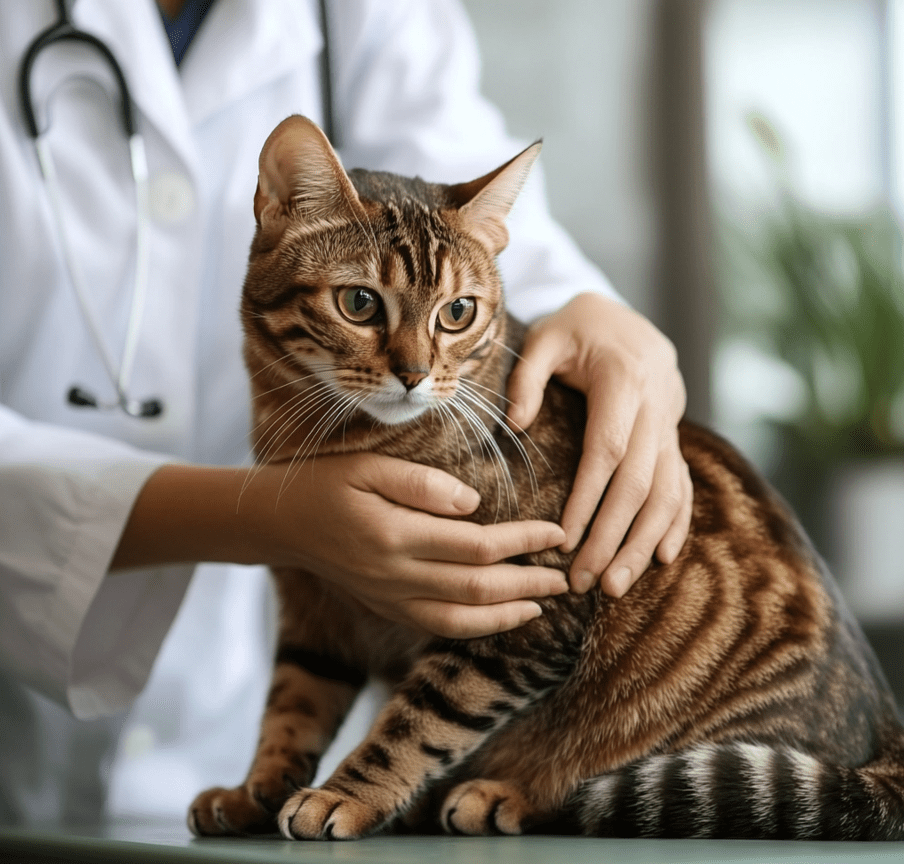
Joint Supplements: Glucosamine, chondroitin, and omega-3 fatty acids may support joint health and reduce inflammation. Always consult your vet before starting supplements.
Pain Relief: Non-steroidal anti-inflammatory drugs (NSAIDs) or other medications may be prescribed to manage discomfort, especially during flare-ups.
Conservative management works best for Bengals with occasional symptoms and no significant mobility issues. Regular check-ups are essential to monitor progress.
2. Surgical Intervention (Grades 3 and 4)
For severe or persistent cases, surgery may be necessary to restore normal function and prevent long-term complications like arthritis. Common procedures include:
Trochleoplasty: This surgery deepens the trochlear groove to better hold the patella in place.
Tibial Tuberosity Transposition: The vet repositions the attachment point of the patellar ligament to align the kneecap correctly.
Soft Tissue Reconstruction: Tightening or releasing ligaments and muscles around the knee can stabilize the patella.
Lateral Imbrication: Suturing the joint capsule on one side helps keep the patella in its groove.
Surgery is typically followed by a recovery period involving restricted activity, pain management, and physical therapy. Most Bengals recover well, regaining their agility within a few months.
3. Post-Treatment Care
Whether managed conservatively or surgically, ongoing care is vital:
Follow-Up Visits: Regular vet check-ups ensure the condition isn’t worsening and that your Bengal is healing properly.
Home Environment Adjustments: Provide ramps or low perches to reduce jumping, especially during recovery.
Monitoring: Watch for signs of recurrence, such as limping or reluctance to move.
With the right treatment plan, most Bengals with patellar luxation can lead active, comfortable lives.
Preventing Patellar Luxation in Bengals
While congenital patellar luxation can’t always be prevented, there are steps Bengal owners can take to minimize risks and support joint health:
Choose a Reputable Breeder: Work with breeders who screen for hereditary conditions like patellar luxation. Ask for health clearances for the parents of your Bengal kitten.
Maintain a Healthy Weight: Obesity is a major risk factor for joint issues. Feed your Bengal a high-quality, portion-controlled diet to keep them lean and fit.
Encourage Safe Exercise: Bengals love to play, but avoid overexertion. Provide enriching toys and climbing structures designed for safe activity.
Regular Vet Check-Ups: Annual or biannual exams can catch early signs of joint problems, allowing for timely intervention.
Joint-Supportive Nutrition: Diets rich in omega-3s, antioxidants, and joint-supporting nutrients can promote long-term mobility. Consult your vet for recommendations.
Monitor for Injuries: Bengals are prone to daring leaps, so keep an eye out for accidents that could harm their joints.
By prioritizing prevention, you can reduce the likelihood of patellar luxation and help your Bengal stay active and healthy.
Living with a Bengal with Patellar Luxation
If your Bengal is diagnosed with patellar luxation, don’t despair. With proper care, most cats adapt well and continue to enjoy life. Here are some tips for supporting your feline friend:
Create a Comfortable Environment: Ensure your home is easy to navigate, with soft bedding and accessible litter boxes.
Engage in Gentle Play: Bengals thrive on stimulation, so offer low-impact toys like laser pointers or puzzle feeders to keep them entertained.
Stay Observant: Monitor your cat’s behavior for changes in mobility or mood, and report concerns to your vet promptly.
Build a Support Network: Connect with other Bengal owners or join online communities to share experiences and advice.
A diagnosis of patellar luxation isn’t the end of your Bengal’s adventurous spirit—it’s simply a call to provide extra care and attention.
Conclusion
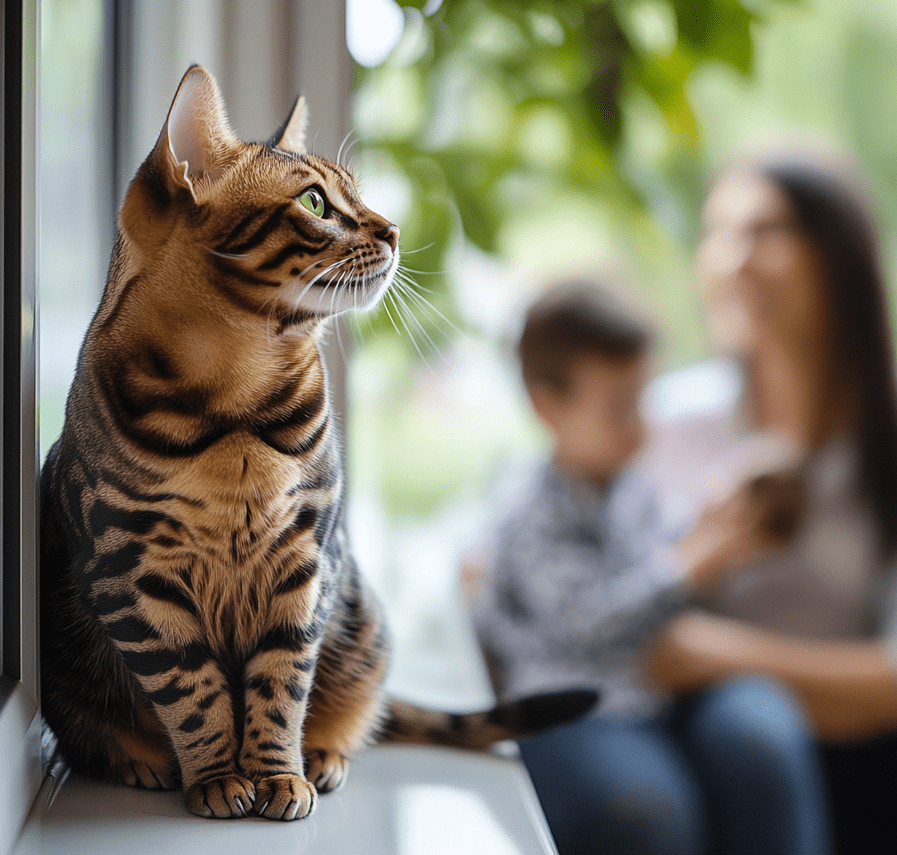
Patellar luxation in Bengals is a manageable condition with the right approach. By understanding the symptoms, seeking timely veterinary care, and adopting preventive measures, you can help your Bengal cat live a full, active life. Whether through conservative management or surgical correction, the goal is to ensure your feline companion remains as spirited and playful as ever. Stay proactive, keep informed, and give your Bengal the love and care they deserve to thrive despite this challenge.
This guide aims to be your go-to resource for navigating patellar luxation in Bengals. If you have further questions or need personalized advice, consult a trusted veterinarian who understands the unique needs of this remarkable breed.

